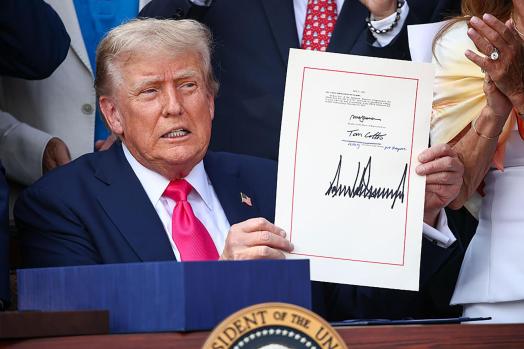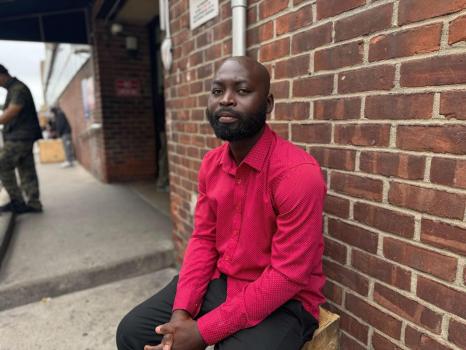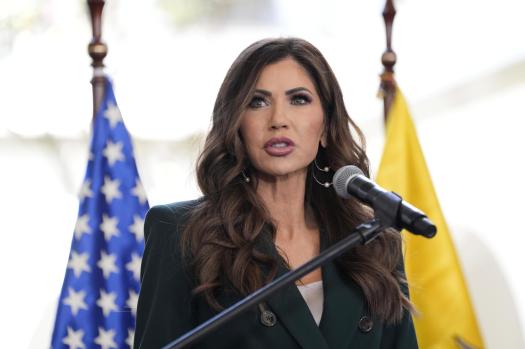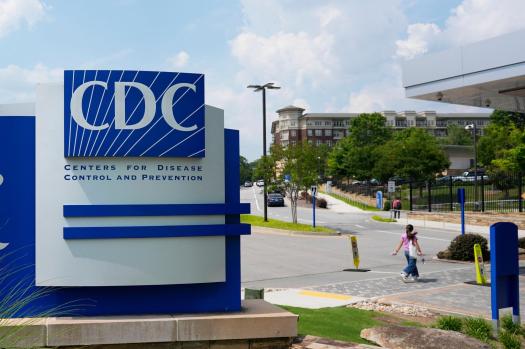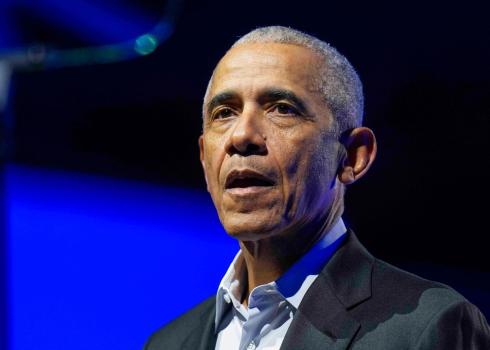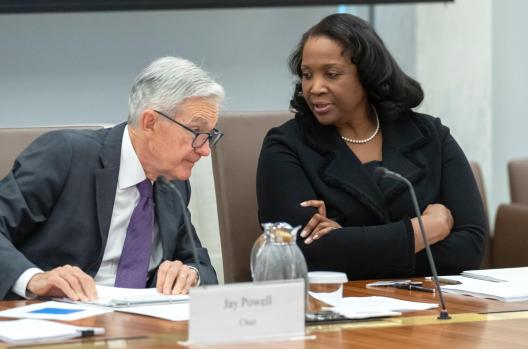By Stateline.org’s Anna Claire Vollers
In an effort to calm concerns about the billions more in record cuts to federal health care funding that President Donald Trump signed into law on Independence Day, Congress set aside $50 billion for rural hospitals and healthcare providers.
Related Articles
-
Why isn t he paying? Trump s golf visit to cost Scottish taxpayers
-
South Park co-creator jokes he s terribly sorry over premiere that drew White House anger
-
Trump administration clears way to keep Alina Habba as New Jersey s top federal prosecutor
-
The foster care system has a suicide problem. Federal cuts threaten to slow fixes
-
How views of the Supreme Court have changed since 2022 abortion ruling, according to AP-NORC polling
But can poor rural hospitals be saved by that bandage?
Alan Morgan, CEO of the National Rural Health Association, a nonprofit policy organization, stated, “I have more questions than answers.” Those answers are still unknown.
Morgan pointed out that the $155 billion in rural Medicaid expenditure cuts over a ten-year period, projected by KFF, a nonprofit health policy and research group, is far greater than the extra funding for rural health, which will be allocated over five years.
Experts, hospital administrators, and lawmakers from both parties are concerned that Trump’s signature legislation will disproportionately harm rural clinics and hospitals, which see a disproportionate number of patients covered by Medicaid, the federal-state public health insurance program for low-income individuals. In order to assist fund tax cuts that disproportionately benefit the wealthiest, the new bill removes more than $1 trillion from Medicaid over the next ten years.
Republican leaders in Congress made the $50 billion adjustment in an attempt to win over party colleagues who had previously objected to such drastic cutbacks to Medicaid and other health care.
Sen. Lisa Murkowski, a moderate Republican from Alaska, voiced concerns about the law’s effect on health care in her state, and the rural program helped her win her support in the U.S. Senate. Approximately one in three Alaskans have Medicaid insurance.
The president and CEO of the Alaska Hospital & Healthcare Association, Jared Kosin, expressed his extreme frustration with the new law’s destruction of Medicaid funds, saying he believes it will have a long-term negative impact on Alaskans. And by simply funding a program, Republicans avoided possible answers, he said.
Decisions like this are made quickly and, to be honest, recklessly, which is frustrating in the public sphere, he said.
We, not them, will bear the consequences.
According to KFF, 12 states with sizable rural populations that expanded Medicaid under the Affordable Care Act to cover more people—Illnesses, Kentucky, Louisiana, Michigan, Minnesota, Missouri, New York, North Carolina, Ohio, Oklahoma, Pennsylvania, and Virginia—are responsible for more than half of the law’s cuts to funding in rural areas.
A few GOP lawmakersThe $50 billion rural initiative has been hailed as a health care success by members of Congress. However, it’s yet unclear which clinics, hospitals, and other providers will get funding and in what amounts.
From fiscal years 2026 through 2030, the Rural Health Transformation Program will distribute $10 billion yearly.
By the end of this year, states are required to apply for their financing and present a thorough plan outlining their intended usage.
According to a Bipartisan Policy Center review of the legislation, the law specifies a few ways that states can spend the funds:
- Making payments to rural hospitals to help them maintain essential services such as emergency room care or labor and delivery.
- Recruiting and training rural doctors, nurses and other health workers.
- Bolstering emergency medical services such as ambulances and EMTs.
- Using new technologies, including telehealth.
- Providing opioid use disorder treatment and mental health services.
- Improving preventive care and chronic disease management.
The $10 billion annually will be split equally among the states that have applied. Depending on a state’s rural population and rural health facilities, the administrator of the federal Centers for Medicare & Medicaid Services, presently Dr. Mehmet Oz, may choose to allocate the remaining half.
Morgan noted that even while the program doesn’t make up for the amount that states would probably lose, it nevertheless presents a chance to reconsider how rural health care is financed. He believes that states will have some leeway in how they use the money and prioritize preventive care for rural people while also assisting hospitals in maintaining their operations.
Morgan stated that if executed properly, it has the potential to significantly alter the future trajectory of rural America. However, that is a really difficult request.
According to a KFF analysis, Kentucky may suffer the most from the new law’s cutback in rural Medicaid spending, losing an estimated $12 billion over a ten-year period.
Kentucky Cabinet for Health and Family Services spokesman Kendra Steele told Stateline that the state’s Medicaid agency is still awaiting more federal advice to determine the impact on the state’s program.
“The passage of legislation at the federal level will have serious impacts for those individuals, rural health care, hospitals, and local economies,” she said. “More than 1.4 million Kentuckians rely on Medicaid, including half of all children in our state, seniors, and more vulnerable populations.”
According to Hemi Tewarson, executive director of the National Academy for State Health Policy, a neutral organization that assists states in creating health care policies, states across will still need to review their budgets in light of the changes, even with the new program.
There is no one-size-fits-all strategy because every region is a little different, she said. The kinds of services that hospitals provide that are essential to the community in which they are located vary, as does hospital ownership. In a setting with limited resources, they must come up with innovative ways to deliver such services.
According to a KFF review of Rand Hospital Data, approximately 44% of hospitals in rural areas are losing money, which is a larger percentage than the 35% of hospitals in metropolitan areas.
Politicore reported earlier this month that Oz tried to persuade U.S. House Republicans that their districts could receive funding from the program even if they weren’t expressly rural before the measure was passed.
According to Pennsylvania Republican U.S. Representative Rob Bresnahans, who told the Wilkes-Barre Times Leader earlier this month that he met with Trump, Oz, and others to obtain promises that hospitals in his district could use the fund, money would start to flow to his district as early as the beginning of next year. He represents the cities of Scranton and Wilkes-Barre, as well as the suburban and rural northeastern region of Pennsylvania.
Morgan, of the National Rural Health Association, anticipates a frenzied rush by legislators and providers to claim rural designation in order to receive a portion of the funds, even if the legislation contains limitations on which facilities or locations qualify as rural.
According to Morgan, that will be a major problem in defining what it means to be rural. When it comes to money, we’re all country at heart.
Anna Claire Vollers, a reporter for Stateline, can be contacted at [email protected].
States Newsroom, 2025. Go to the website stateline.org. Tribune Content Agency, LLC is the distributor.
